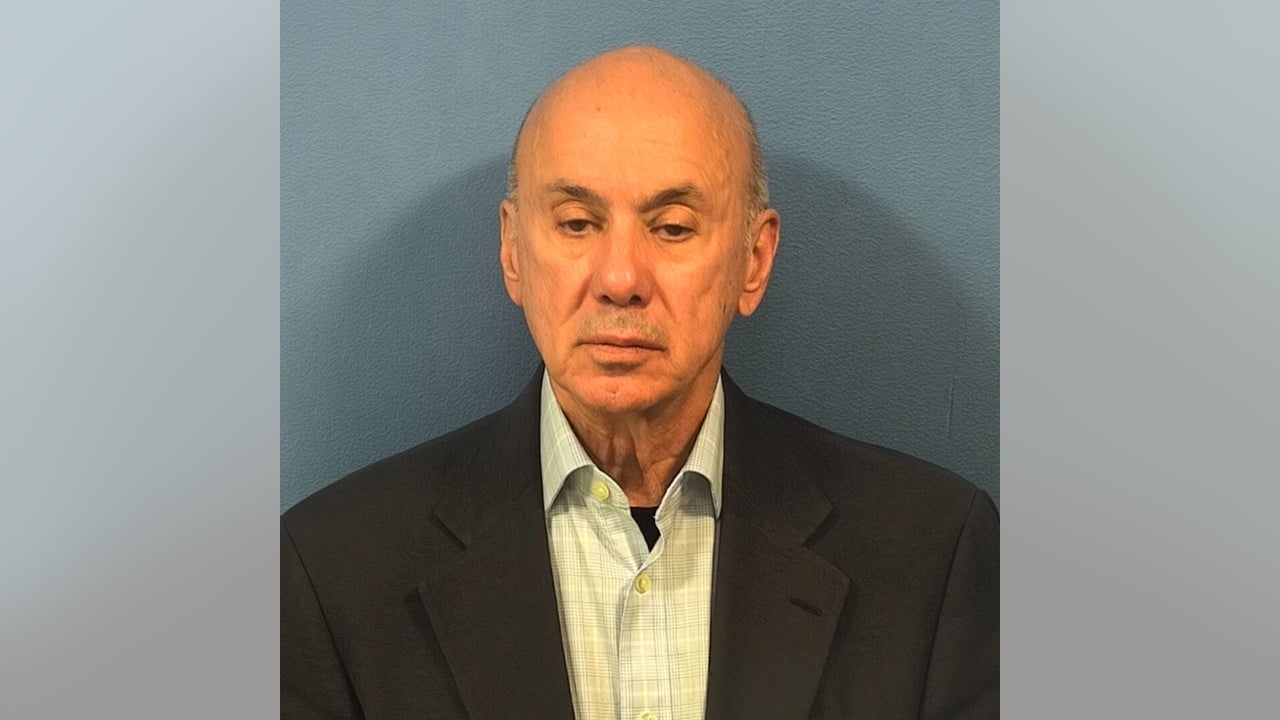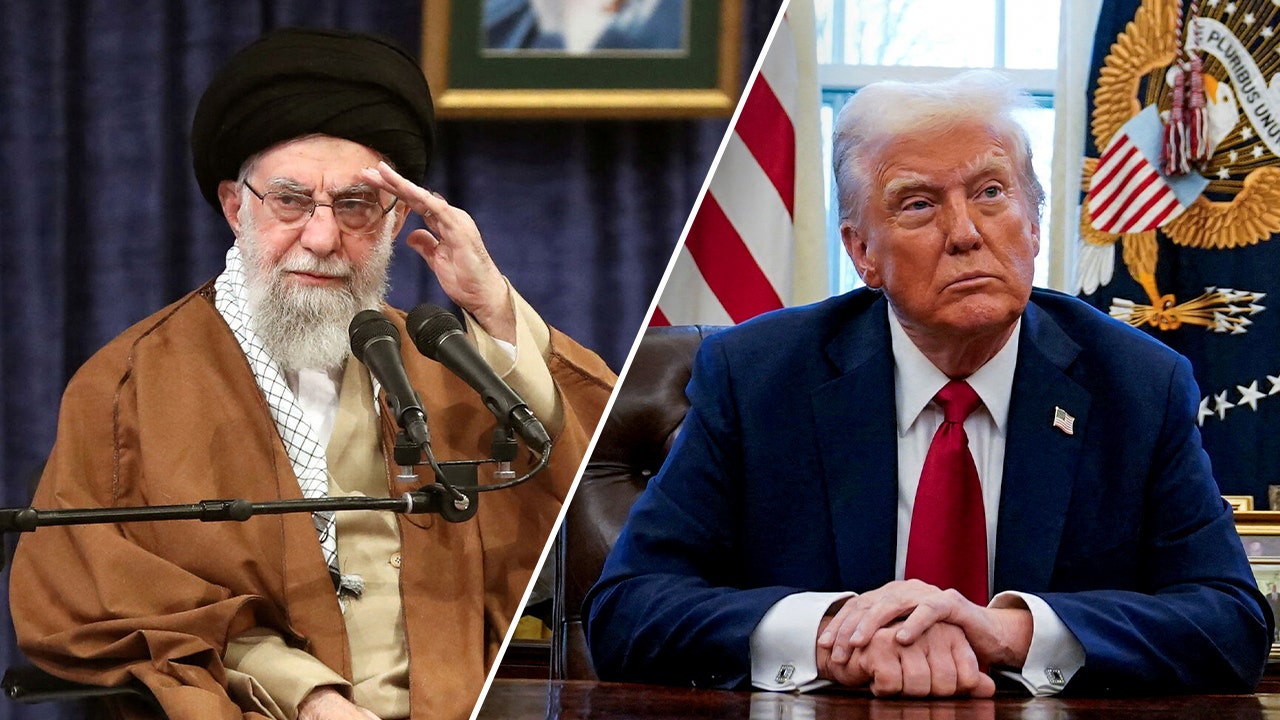World
Niger, Mali and Burkina Faso military leaders sign new pact, rebuff ECOWAS

The military leaders of Burkina Faso, Mali and Niger have hailed a newly signed treaty as a step “towards greater integration” between the three countries, in the latest showing of their shift away from traditional regional and Western allies.
During a summit in the Nigerien capital of Niamey on Saturday, the three leaders signed a confederation treaty that aims to strengthen a mutual defence pact announced last year, the Alliance of Sahel States (AES).
The signing capped the first joint summit of the leaders – Niger’s General Abdourahmane Tchiani, Burkina Faso’s Captain Ibrahim Traore, and Mali’s Colonel Assimi Goita – since they came to power in successive coups in their bordering West African nations.
It also came just months after the three countries withdrew from the Economic Community of West African States (ECOWAS) regional bloc in January.
Speaking at the summit on Saturday, Tchiani called the 50-year-old ECOWAS “a threat to our states”.
The West African economic bloc had suspended the three countries after their respective military takeovers, which occurred in July 2023 in Niger, September 2022 in Burkina Faso and August 2021 in Mali.
ECOWAS also imposed sanctions on Niger and Mali, but the bloc’s leaders have held out hope for the trio’s eventual return.
“We are going to create an AES of the peoples, instead of an ECOWAS whose directives and instructions are dictated to it by powers that are foreign to Africa,” Tchiani said.
Burkina Faso’s Traore also accused foreign powers of seeking to exploit the countries. The three nations have regularly accused former colonial ruler France of meddling in ECOWAS.
“Westerners consider that we belong to them and our wealth also belongs to them. They think that they are the ones who must continue to tell us what is good for our states,” he said.
“This era is gone forever. Our resources will remain for us and our population’s.”
For his part, Mali’s Goita said the strengthened relationship means an “attack on one of us will be an attack on all the other members”.
Shifting influence
Reporting from Abuja on Saturday, Al Jazeera’s Ahmed Idris noted that the three military leaders met just a day before ECOWAS was set to have a meeting in the capital of Nigeria.
Efforts to mediate the countries’ return to the bloc were expected to be discussed, Idris said.
“Many people believe that the meeting in Niger was to counter whatever is coming [from] ECOWAS and to also outline their position: That they are not returning to the Economic Community of the West African States,” he explained.
Idris added the newly elected president of Senegal, Bassirou Diomaye Faye, recently visited the three countries in an informal capacity in an effort to mend the ties.
“However, it’s not clear whether or not he’s got a positive response,” he said.
Adama Gaye, a political commentator and former ECOWAS communications director, said the creation of the three-member Alliance of Sahel States has “weakened” the economic bloc.
Still, Gaye told Al Jazeera that “despite its real-name recognition, ECOWAS has not performed well when it comes to achieving regional integration, promoting intra-African trade in West Africa and also in ensuring security” in the region.
“So this justifies the feeling of many in West Africa – [the] ordinary citizenry and even intellectuals – [who are] asking questions about the standing of ECOWAS, whether it should be revised, reinvented,” he said, urging the bloc to engage in diplomacy to try to bridge the rift.
Violence and instability
The Niamey summit also came a day before the United States is set to complete its withdrawal from a key base in Niger, underscoring how the new military leaders have redrawn security relations that had defined the region in recent years.
Armed groups linked to al-Qaeda and ISIL (ISIS) have jockeyed for control of territory in all three countries, unleashing waves of violence and spurring concern in Western capitals.
But following the recent coups, the countries’ ties to Western governments have frayed.
French troops completed their withdrawal from Mali in 2022, and they left Niger and Burkina Faso last year.
Meanwhile, US Air Force Major General Kenneth Ekman said earlier this week that about 1,000 military personnel would complete their withdrawal from Niger’s Air Base 101 by Sunday.
The US is also in the process of leaving a separate, $100m drone base near Agadez in central Niger, which officials have described as essential to gathering intelligence about armed groups in the region.
While pushing out former Western allies, the military leaders in Burkina Faso, Niger and Mali have increasingly pursued security and economic ties with Russia.
However, it remains unclear if the new approach has helped to stem the violence that has plagued the countries, which are home to about 72 million people.
In 2023, Burkina Faso saw a massive escalation in violence, with more than 8,000 people killed, according to the Armed Conflict Location and Event Data Project (ACLED) tracker.
In Niger, slight gains against armed groups largely backslid following the coup, according to ACLED.
Meanwhile, an offensive by Malian forces and Wagner mercenaries saw “elements” of the Russian-government-linked group “involved in the indiscriminate killing of hundreds of civilians, destruction of infrastructure, and looting of property, as well as triggering mass displacement”, ACLED said.
About three million people have been displaced by fighting across the countries.

World
Sludge-Fertilizer Giant Leaves Texas Town Amid ‘Forever Chemicals’ Crisis

The City of Fort Worth, Texas, is ending its contract with Synagro, the Goldman Sachs-backed provider of fertilizer made from sewage sludge, over concerns that “forever chemicals” in the fertilizer are contaminating local farmland and groundwater.
Fort Worth this month also sued several manufacturers of the chemicals, also called per- and polyfluoroalkyl substances or PFAS, alleging that they contaminated the city’s water supplies.
The New York Times reported last year on a group of ranchers in Johnson County, just south of Fort Worth, who sued Synagro, blaming the fertilizer used on neighboring farmland for contaminating their crops and livestock.
The sewage-sludge fertilizer came from Synagro, which had a contract to take sewage from Fort Worth’s sewage treatment plant, treat it further, and distribute it to farmers as fertilizer. Johnson County has since launched a criminal investigation into Synagro.
A growing body of research has shown that sewage sludge, much of which is used as fertilizer, can be contaminated with PFAS, a synthetic chemical used widely in everyday items like nonstick cookware and stain-resistant carpets.
The chemicals, which are linked to a range of illnesses including an increased risk of cancer, do not break down in the environment. When tainted sludge is used as fertilizer on farmland, it can contaminate the soil, groundwater, crops and livestock.
In January, the Environmental Protection Agency warned for the first time that PFAS present in sewage fertilizer, also known as biosolids, can pose human health risks. Maine, the only state that has started to systematically test farmland for PFAS, has detected the chemicals at dozens of dairy farms. But there has been little testing on farms in other states.
Fort Worth’s city council voted unanimously on Tuesday to cancel a 10-year contract signed with Synagro in 2019. The contract will end on April 1, and staff at the city’s water utility are working on new contracts for its biosolids operations, according to council records.
The city did not cite a reason for terminating the contract. But in a recent lawsuit filed by Fort Worth against the manufacturers of PFAS chemicals, the city cited the presence of PFAS in the city’s drinking-water sources and wastewater infrastructure.
Synagro said in a statement that the company and the city of Fort Worth “mutually agreed to part ways and settle all claims following ongoing disagreements regarding contract requirements.” It said that the termination was unrelated to PFAS. The city’s water department did not immediately respond to a request for comment.
Synagro, owned by Goldman Sachs Asset Management, has disputed claims that its biosolids have contaminated Texas farmland. This month, the company filed a motion to dismiss the Johnson County ranchers’ claims, citing an independent investigation it had commissioned that concluded that sludge fertilizer could not be the source of high PFAS levels found in the ranchers’ livestock.
Synagro also said testing had shown far lower levels of PFAS in the soil than claimed by the ranchers. The company has not publicly released the investigation.
Lawyers representing the ranches could not be reached for comment. The ranchers have stopped sending their cattle to market, while continuing to care for them, and say they face financial ruin.
Dana Ames, an environmental investigator leading Johnson County’s probe of Synagro, said an “exhaustive investigation” had found high levels of PFAS on the rancher’s property. “We have ruled out all other sources of contamination. We also tested the biosolids and found contamination,” she said.
At the council meeting, Luanne Langley, a resident of Grandview, Texas, accused the city of standing by while Synagro “dumped biosolids on unsuspecting landowners and farmers.” She said canceling the contract was not enough. “How is that going to help the families whose lives have been destroyed?” she said.
World
Massive 7.7 magnitude earthquake rocks Thailand, Burma, collapsing buildings and killing more than 150
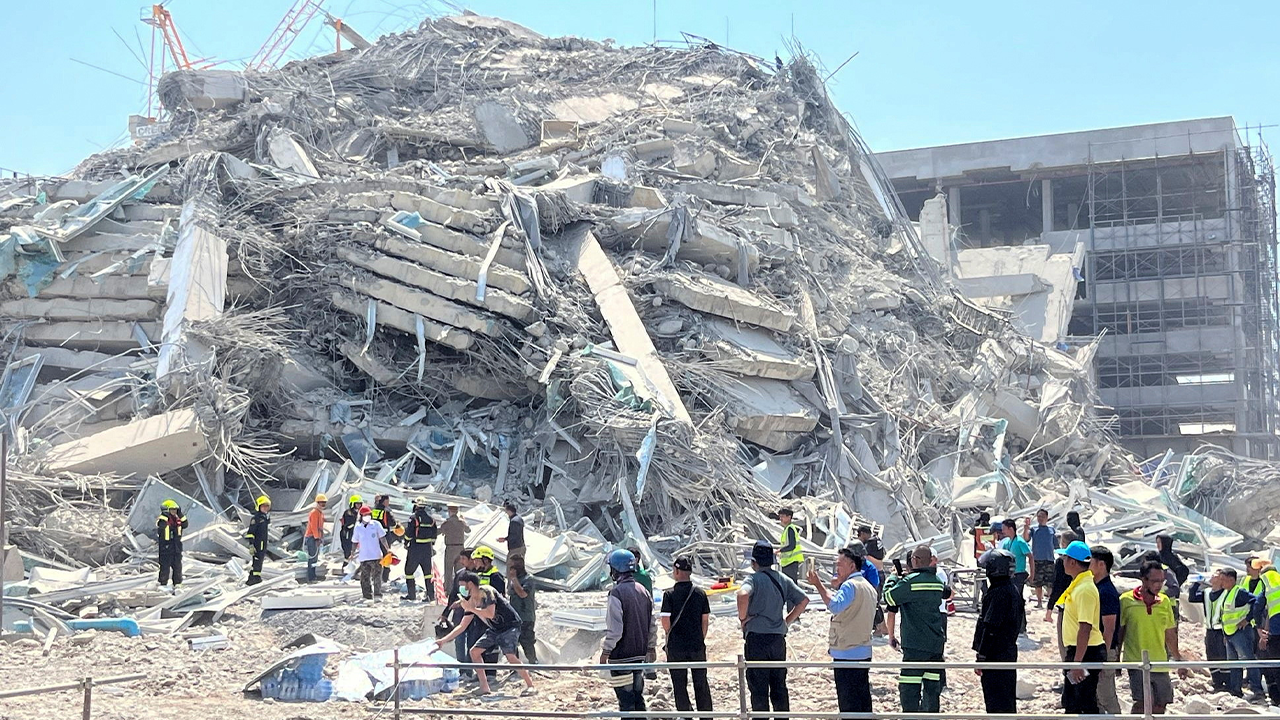
A massive 7.7 magnitude earthquake rattled Thailand and Burma on Friday, causing buildings to collapse and leaving more than 150 people dead across both countries.
Dramatic footage captured in Bangkok showed a 33-story apartment building that was under construction falling down, scattering dust and debris throughout the city’s streets. Bangkok city authorities said 10 people were killed, 16 were injured and 101 are missing from three construction sites, including the high-rise.
More than 144 people were killed in Burma, where photos and video from two hard-hit cities showed extensive damage. The earthquake’s epicenter was in central Burma and aftershocks were reportedly felt in India and China.
One aftershock was reported to have been 6.4 magnitude, according to the United States Geological Survey. People in Bangkok that were evacuated from their buildings were cautioned to stay outside in case there were more.
AMERICA’S MOST EXPENSIVE NATURAL DISASTERS IN RECENT DECADES
Rescuers work at the site of a collapsed apartment building under construction in Bangkok, Thailand. (Reuters/Ann Wang)
The head of Burma’s military government said in a televised speech Friday evening that at least 144 people were killed and 730 others were injured.
“The death toll and injuries are expected to rise,” Senior Gen. Min Aung Hlaing said, according to the Associated Press.
In Bangkok, Defense Minister Phumtham Wechayachai said 90 people were missing in the wake of the building collapse.
Near Bangkok’s popular Chatuchak market, the 33-story building under construction, with a crane on top, crumpled into a cloud of dust, and onlookers could be seen screaming and running in other videos posted to social media.
Officials there declared the city a disaster area to facilitate interagency aid and emergency help. The greater Bangkok area is home to more than 17 million people, many of whom live in high-rise apartments.
April Kanichawanakul, who works in an office building in Bangkok’s city center, at first didn’t even realize it was an earthquake, the first she’d ever experienced. “I just thought I was dizzy,” she told the AP.
“All of a sudden the whole building began to move. Immediately there was screaming and a lot of panic,” added Fraser Morton, a tourist from Scotland, who was in one of Bangkok’s many malls shopping for camera equipment.
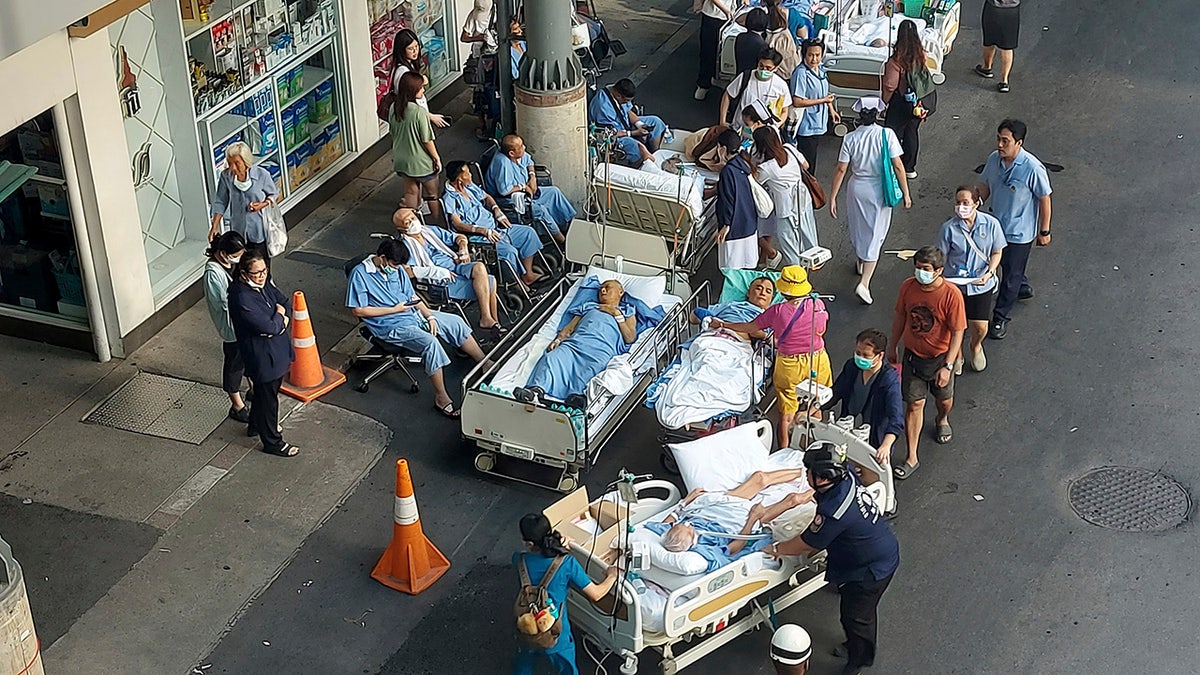
Patients are evacuated outdoors at a hospital after a 7.7 magnitude earthquake in Bangkok, Thailand, on Friday, March 28. (Tadchakorn Kitchaiphon)
“I just started walking calmly at first but then the building started really moving, yeah, a lot of screaming, a lot of panic, people running the wrong way down the escalators, lots of banging and crashing inside the mall.”
IS THE EAST COAST ON THE BRINK OF A MAJOR EARTHQUAKE — AND ARE WE PREPARED?
The U.S. Geological Survey and Germany’s GFZ center for geosciences said the earthquake was a shallow 6.2 miles, with an epicenter in central Burma, according to preliminary reports.
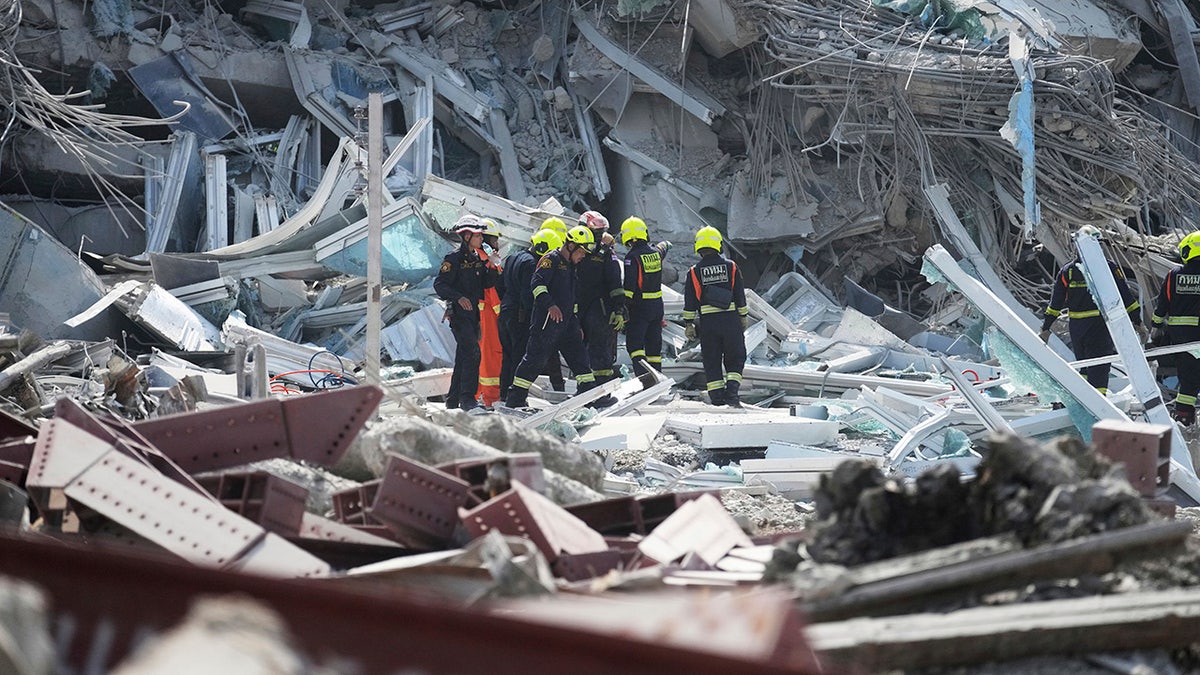
Rescuers work at the site of a high-rise building under construction that collapsed after a 7.7 magnitude earthquake in Bangkok, Thailand, on Friday, March 28. (AP/Sakchai Lalit)
Water from high-rise rooftop pools in Bangkok sloshed over the side as they shook, and debris fell from many buildings.
Prime Minister Paetongtarn Shinawatra called an emergency meeting to assess the impact of the quake, which Thailand’s Department of Disaster Prevention said was felt in almost all regions of the country.

The location of Friday’s earthquake that rocked Burma and Thailand. (Fox News)
In Mandalay, Burma’s second-largest city and close to the epicenter, the earthquake damaged part of the former royal palace and buildings, according to videos and photos released on Facebook social media.
In the Sagaing region just southwest of Mandalay, a 90-year-old bridge collapsed, and some sections of the highway connecting Mandalay and the city of Yangon were also damaged.
In the capital Naypyitaw, the quake damaged religious shrines, sending parts toppling to the ground, and some homes.

Damaged pagodas are seen after an earthquake, on Friday, March 28, in Naypyitaw, Burma. (AP/Aung Shine Oo)
There are reportedly 188 people injured so far in Tibet on the Chinese side of the border, according to the Xinhua News Agency.
The Associated Press and Reuters contributed to this report.
World
JD Vance tours US military base on controversial visit to Greenland

The trip to the semi-autonomous Danish territory comes as relations between the US and the Nordic country nosedived after President Donald Trump repeatedly suggested that the US should control the island.
US Vice President JD Vance, his wife and other senior US officials have visited an American military base in Greenland, part of a trip that was scaled back following an uproar among Greenlanders and Danes who were angry that the original itinerary was planned without consulting them.
Soon after arriving on Friday, Vance briefly addressed US troops stationed at the base as he and his wife sat down to lunch with them, saying that that he’s “really interested in Arctic security.”
“As you all know, it’s a big issue and it’s only going to get bigger over the coming decades,” said Vance, who was scheduled later to receive briefings from military officials and deliver remarks.
The revised trip to the semi-autonomous Danish territory comes as relations between the US and the Nordic country have nosedived after US President Donald Trump repeatedly suggested that the United States should control the mineral-rich territory of Denmark, a traditional US ally and NATO member.
Friday’s one-day visit to the US Space Force outpost at Pituffik on Greenland’s northwest coast removed the risk of potentially violating diplomatic custom by sending a delegation to another country without an official invitation.
It will also reduce the likelihood that Vance and his wife will cross paths with residents angered by Trump’s threats of seizing control of the island.
During his visit, Vance was expected to receive briefings and deliver remarks to US service members on the base, according to the vice president’s office.
His delegation includes the national security advisor, Mike Waltz, and Energy Secretary Chris Wright.
According to a senior White House official, Vance was expected to make the case that Danish leaders have “spent decades mistreating the Greenlandic people, treating them like second-class citizens and allowing infrastructure on the island to fall into disrepair.”
The official, who was not authorised to comment publicly and requested anonymity to preview the vice president’s message, added that Vance would emphasise the importance of bolstering Arctic security in places like Pituffik.
Ahead of Vance’s arrival, four of the five parties elected to Greenland’s parliament earlier this month signed an agreement to form a new coalition government.
Those parties have come together in the face of Trump’s designs on the territory.
“It is a time when we as a population are under pressure,” the prime minister-designate, Jens-Frederik Nielsen, said before the accord was signed to applause and cheers in the capital, Nuuk.
He added that “we must stick together. Together we are strongest,” Greenland broadcaster KNR reported.
In a post on Instagram, Danish Prime Minister Mette Frederiksen congratulated Nielsen and his incoming government, and said that “I look forward to close cooperation in an unnecessarily conflict-filled time.”
Frederiksen said on Tuesday that the US visit, which was originally set for three days, created “unacceptable pressure.”
She has said that Denmark wants to work with the US on defence and security, but Greenland belongs to the Greenlanders.
Initially, second lady Usha Vance had announced a solo trip to the Avannaata Qimussersu dogsled race in Sisimiut.
Her husband then subsequently said he would join her, only to change the itinerary again, after protests from Greenland and Denmark, to a one-day visit to the military post only.
In an interview on Wednesday, Trump repeated his desire for US control of Greenland.
Asked if the people there were keen to become US citizens, Trump said he didn’t know “but I think we have to do it and we have to convince them.”
-

 News1 week ago
News1 week agoTrump Administration Ends Tracking of Kidnapped Ukrainian Children in Russia
-

 World1 week ago
World1 week agoCommission warns Alphabet and Apple they're breaking EU digital rules
-

 News1 week ago
News1 week agoZelenskyy says he plans to discuss Ukraine ceasefire violations in a call with Trump
-

 News1 week ago
News1 week agoTrump’s Ending of Hunter Biden’s Security Detail Raises Questions About Who Gets Protection
-

 Culture1 week ago
Culture1 week agoJack Draper’s tennis: How embracing variety took him to Indian Wells title
-

 World1 week ago
World1 week agoNASA astronauts return to Earth after 9 months: How space changes the body
-

 Technology1 week ago
Technology1 week agoGoogle’s Pixel Tablet is $120 off ahead of Amazon’s spring sales event
-

 Technology1 week ago
Technology1 week agoStreaming services keep getting more expensive: all the latest price increases

